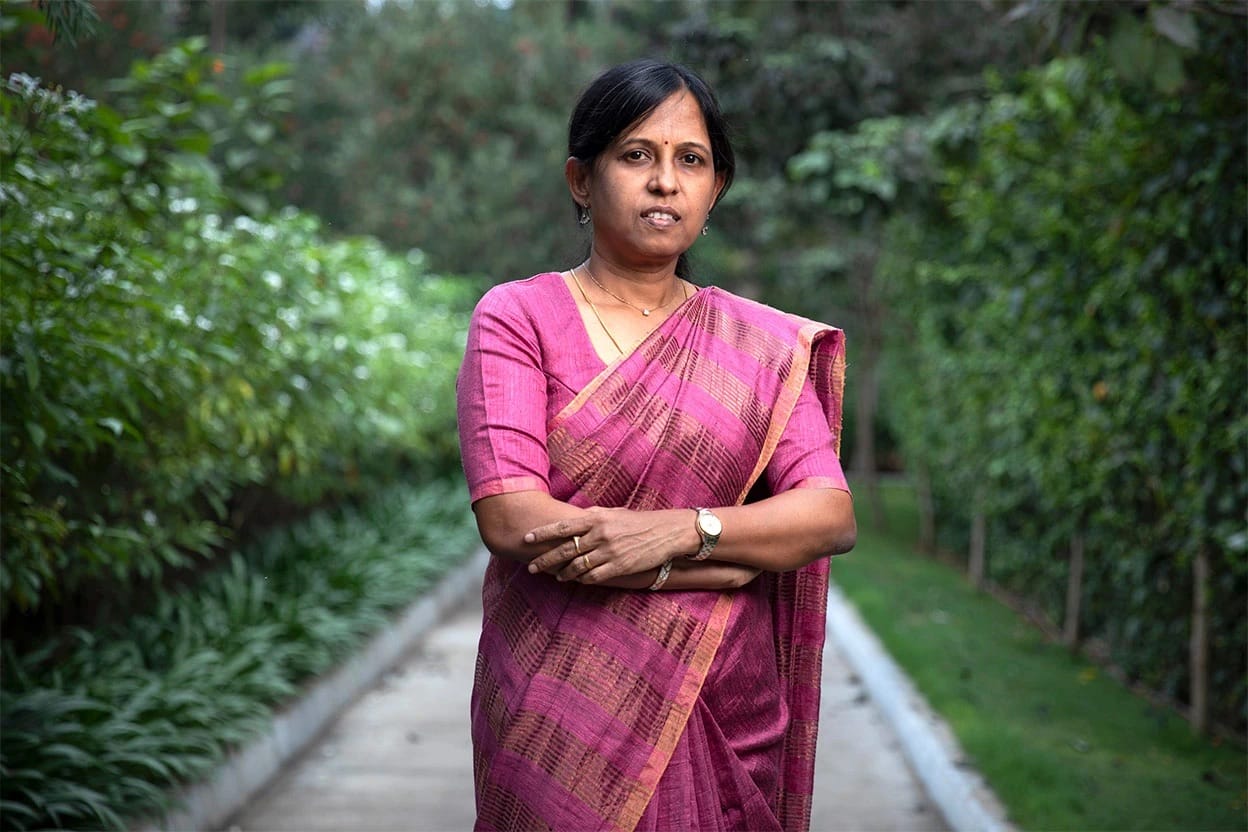The engineer who played a key role in Chandrayaan 3’s triumphant touchdown on the Moon

Kalpana Kalahasti, the Associate Project Director of ISRO’s Chandrayaan 3 mission, has been featured in Nature’s 10 most notable people of the year, owing to her crucial role in ensuring India’s triumphant touchdown on the Moon. I spoke to her to highlight her team’s approach to Chandrayaan 3. It’s also my first article on Nature! :D
From the day we started rebuilding our spacecraft after the Chandrayaan 2 experience, it has been breathe in, breathe out Chandrayaan 3 for the team.
These were the words of the mission’s Associate Project Director Kalpana Kalahasti on August 23, as she aired on the most viewed YouTube livestream ever a few minutes after the lander built by the Indian Space Research Organization (ISRO) autonomously guided itself to a lunar touchdown at 69.37°S, 32.32°E.
Success wasn’t a given, especially considering that four out of the previous five lunar landing attempts had failed: namely the Israel-based SpaceIL’s Beresheet lander, India’s own Chandrayaan 2 craft, private Japanese firm ispace’s Hakuto-R, and Russia’s Luna 25.
Another challenge for Kalahasti and the rest of the core Chandrayaan 3 team was that the total spacecraft mass and available resources were roughly the same as Chandrayaan 2, and so building in many redundancies or drastically redesigning the lander wasn’t an option. To that end, Kalahasti worked with Project Director Palanivel Veeramuthuvel to reconfigure Chandrayaan 2 in ways that would provide greater redundancy, such as allocating some orbiter mass to the lander for increased fuel margins, strengthened legs, extended solar panels, and more.
“Getting the reconfigured lander as a robust system on paper itself was crucial because you can’t really redo hardware in advanced development phases. This is where Chandrayaan 2’s flight was invaluable. Its many in-house developed systems that did work allowed us to arrive at a Chandrayaan 3 configuration that wasn’t overdone,” said Kalahasti.
Veeramuthuvel and Kalahasti spent the bulk of Chandrayaan 3’s development time coming up with and overseeing comprehensive ground tests that would uniquely increase the likelihood of a safe landing. These included testing landing sensors on a helicopter to mimic different mission phases, examining the performance of engines that need to dynamically throttle during descent, assessing the navigation system’s ability to avoid hazards before touchdown with crane-based setups on Moon-like terrain, and conducting leg drop tests on lunar simulant beds to ensure the lander can handle varied slopes and a range of velocities on touchdown.
“You can only go so far with hardware tests. You can’t subject hardware to many failure scenarios, and so we formed a dedicated simulation group to characterize our lander’s ability to recover from off-nominal trajectories,” added Kalahasti, highlighting another mission building aspect that exemplifies the failure-based approach her team took for Chandrayaan 3’s success. The group also simulated each redundant path the lander could’ve taken during autonomous descent to be confident about the desired outcome.
Therein the crux of Chandrayaan 3. It is this meticulous approach that resulted in Chandrayaan 3 keeping the momentum for the Moon going by feeding into the global frenzy of sending robotic missions to Luna. “The goal was to have a well documented, well understood system. There was no compromise in demonstrating the system’s performance down to its specifics,” said Kalahasti.
The efforts evidently paid off. However, conducting so many tests and integrating their results while also working towards the flight model was a giant iterative task. Swiftly coordinating the dozen ISRO centers involved countrywide wasn’t easy. “It was as if we were building five to six different satellites together,” remarked Kalahasti. For her, this responsibility meant leaning onto past experiences in project management and systems engineering, which notably included leading roles in ISRO’s Earth observation satellites such as the Indo-French SARAL craft.
When asked what gravitated her to ISRO in 2000, Kalahasti reminisced her desire to work at a core engineering organization that would leverage her degree in Electronics and Communications. “ISRO was one of the few places in the country which undertook core technology projects.” Having that north star landed her a job as a radar engineer at the Satish Dhawan Space Center, ISRO’s spaceport.
Kalahasti hopes that the spark that Chandrayaan 3 ignited among the Indian youth similarly guides them: “Apart from the mission’s technical aspects, I hope young professionals across India and the world get inspired by how the team meticulously emerged from failure.”
Indeed, Chandrayaan 3 has kept the momentum for the Moon going by feeding into the global frenzy of sending hardware to the Moon. “India giving the hard problem of a lunar landing a second try soon after its first attempt is an appreciated investment the whole world will benefit from,” said Jessy Kate Schingler, an outer space policy researcher and a senior advisor at the Open Lunar Foundation.
Kalahasti is excited about what ISRO could take on next. “Now that the critical aspect of demonstrating a Moon landing is done, we can move towards other capabilities. As part of a roadmap, we’re looking into sample return as a precursor for crewed Moon landings,” alluding to the Indian government’s newly announced goal to send an Indian to the Moon by 2040.
Originally published on Nature.
